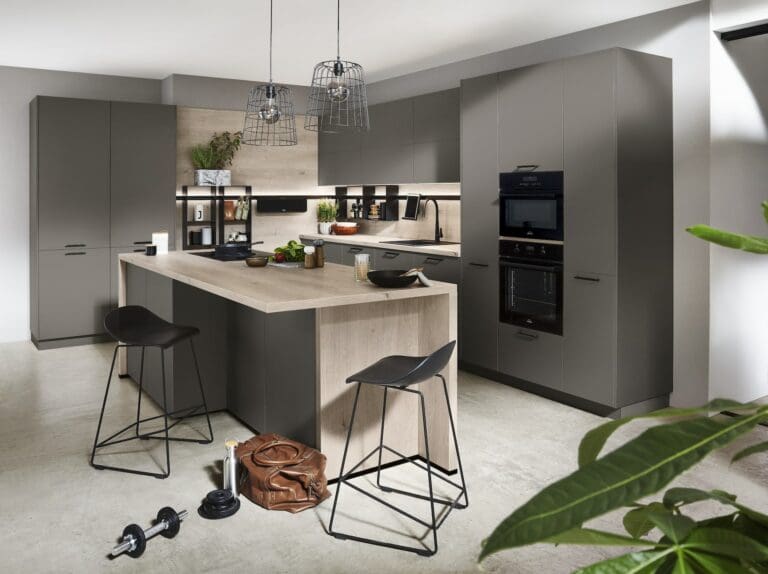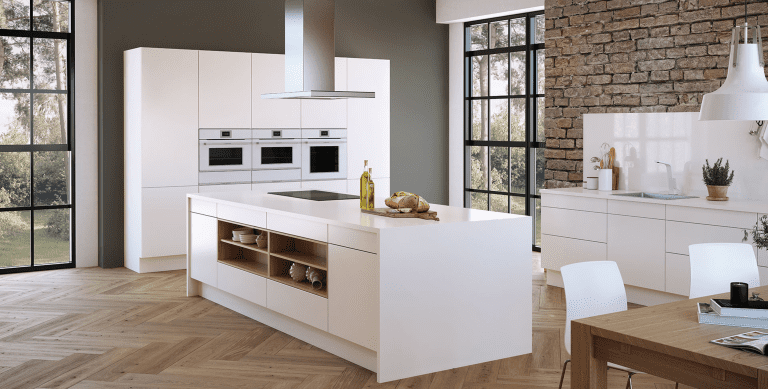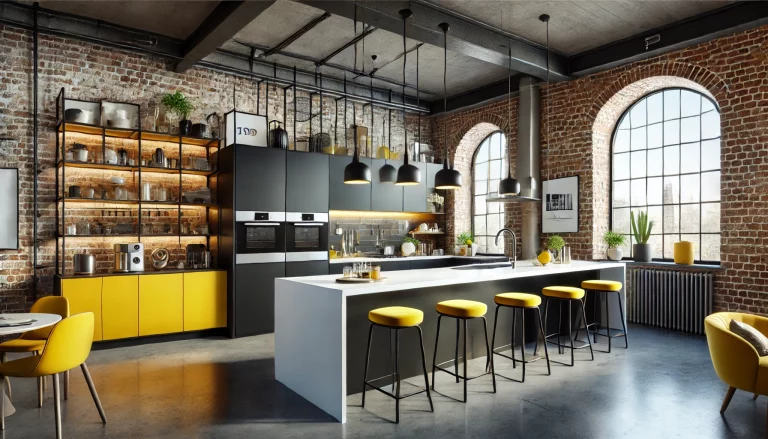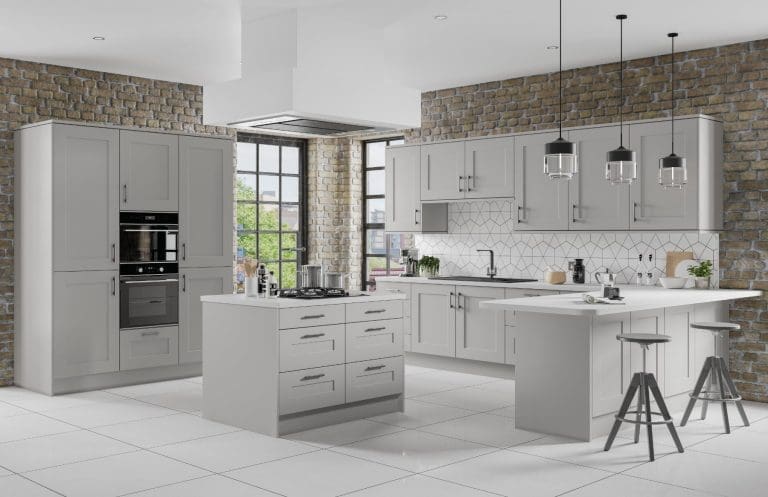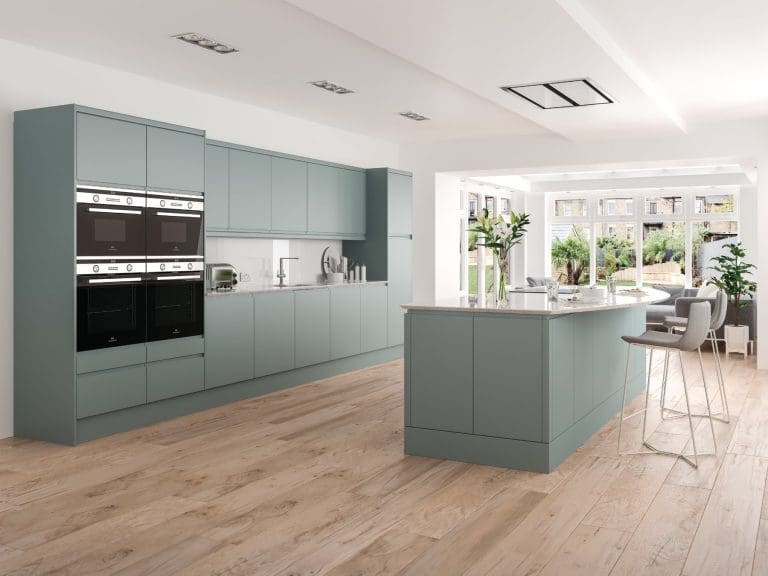How to Combine Kitchen Styles When Planning Your New Kitchen
The Art of Mixing and Matching: How to Combine Different Kitchen Styles When Planning Your New Kitchen
Designing a new kitchen is an exciting venture, but it can also be a daunting task, especially when you want to incorporate elements from various kitchen styles. The challenge lies in creating a harmonious blend that reflects your personal taste while ensuring functionality and aesthetic appeal. Here, the My Kitchen Specialists will explore the art of combining kitchen styles to achieve a cohesive and stunning space.

Understanding the Basics of Kitchen Styles
Before diving into the process of mixing and matching to combine kitchen styles, it’s essential to understand the characteristics of different kitchen styles. Here are a few popular kitchen design trends for modern homes:
- Modern Kitchen Style: Modern kitchens are sleek and minimalist, characterised by clean lines, flat-panel cabinets, and a neutral colour palette. Materials like stainless steel, glass, and engineered surfaces are commonly used, creating a functional and streamlined look.
- Industrial Kitchen Style: Industrial kitchens draw inspiration from urban lofts and factories, featuring exposed brick, concrete, metal finishes, and utilitarian design elements. The colour scheme is usually neutral, with a mix of raw and polished textures.
- Scandinavian Kitchen Style: Scandinavian kitchens are known for their simplicity, functionality, and bright, airy feel. They often feature white or light-coloured cabinets, natural wood accents, and a minimalist approach to decor.
- Traditional Kitchen Style: Traditional kitchens are timeless and elegant, often featuring classic elements such as raised-panel cabinets, ornate details, and warm, rich colours. Materials like wood and stone are prevalent, and the overall feel is one of comfort and sophistication.
- Rustic Kitchen Style: Rustic kitchens exude warmth and charm, often incorporating natural materials like reclaimed wood, stone, and metal. This style is inspired by the countryside and typically includes open shelving, farmhouse sinks, and vintage accents.
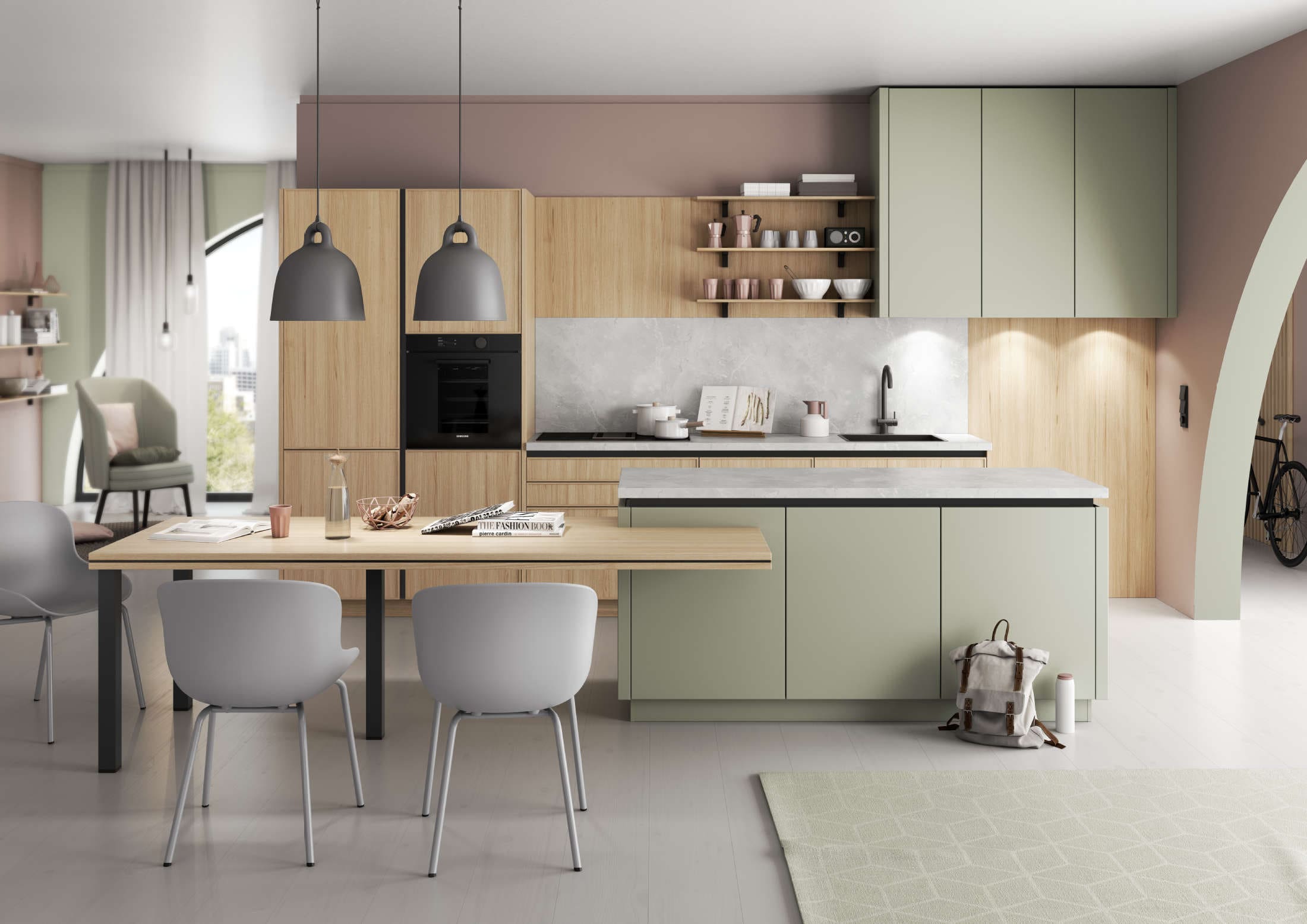
Planning Your Mixed-Style Kitchen
Combining different kitchen styles requires careful planning and a keen eye for detail. Here’s how to get started:
Define Your Vision
Start by envisioning what you want your kitchen to look like. Gather inspiration from magazines, websites, and social media platforms like Pinterest and Instagram. It is also a good idea to create a mood board to help you visualise how different elements can come together.
Identify Key Elements
Determine which elements from each style you want to incorporate. For instance, you might love the warmth of a rustic kitchen but also appreciate the sleekness of modern design. Decide which features are non-negotiable and which ones you’re willing to compromise on.
Create a Cohesive Kitchen Colour Palette
A unified kitchen colour palette is crucial for combining different kitchen styles seamlessly. Choose a base colour that works well with the elements you’ve selected and add complementary hues to tie everything together. Neutral kitchen colours like white, grey, and beige often serve as excellent bases.

Tips for Successfully Combining Different Kitchen Styles
Now that you have a clear vision and plan, here are some practical tips to help you execute your mixed-style kitchen design:
Balance is Key
Balance is essential when combining different kitchen styles. Avoid overloading your space with too many contrasting elements. Instead, aim for a harmonious blend where each style complements the other. For example, pair modern, flat-panel cabinets with rustic, wooden open shelves to create a balanced look.
Focus on Focal Points
Identify focal points in your kitchen, such as the kitchen island, splashback, or a statement piece of furniture. Use these areas to showcase the dominant style and incorporate elements from other styles around them. This approach ensures that the kitchen doesn’t look chaotic or mismatched.
Mix Materials and Textures
One of the best ways to combine kitchen styles is by mixing materials and textures. For example, you can pair sleek, modern worktops with rustic wooden cabinets or add industrial metal light fixtures to a traditional kitchen. The contrast between materials creates visual interest and adds depth to your design.
Choose Versatile Kitchen Furniture and Fixtures
Opt for kitchen furniture and fixtures that can bridge the gap between different styles. For instance, a farmhouse sink works well in both rustic and industrial kitchens, while stainless steel appliances can complement modern, industrial, and even traditional kitchen designs. Versatile pieces will help unify the overall look of your kitchen.
Incorporate Personal Touches
Adding personal touches to your kitchen can make the space feel unique and cohesive. Displaying cherished items, such as vintage cookware, modern art pieces, or handmade crafts, can help tie different styles together. These personal elements also infuse your kitchen with character and warmth.
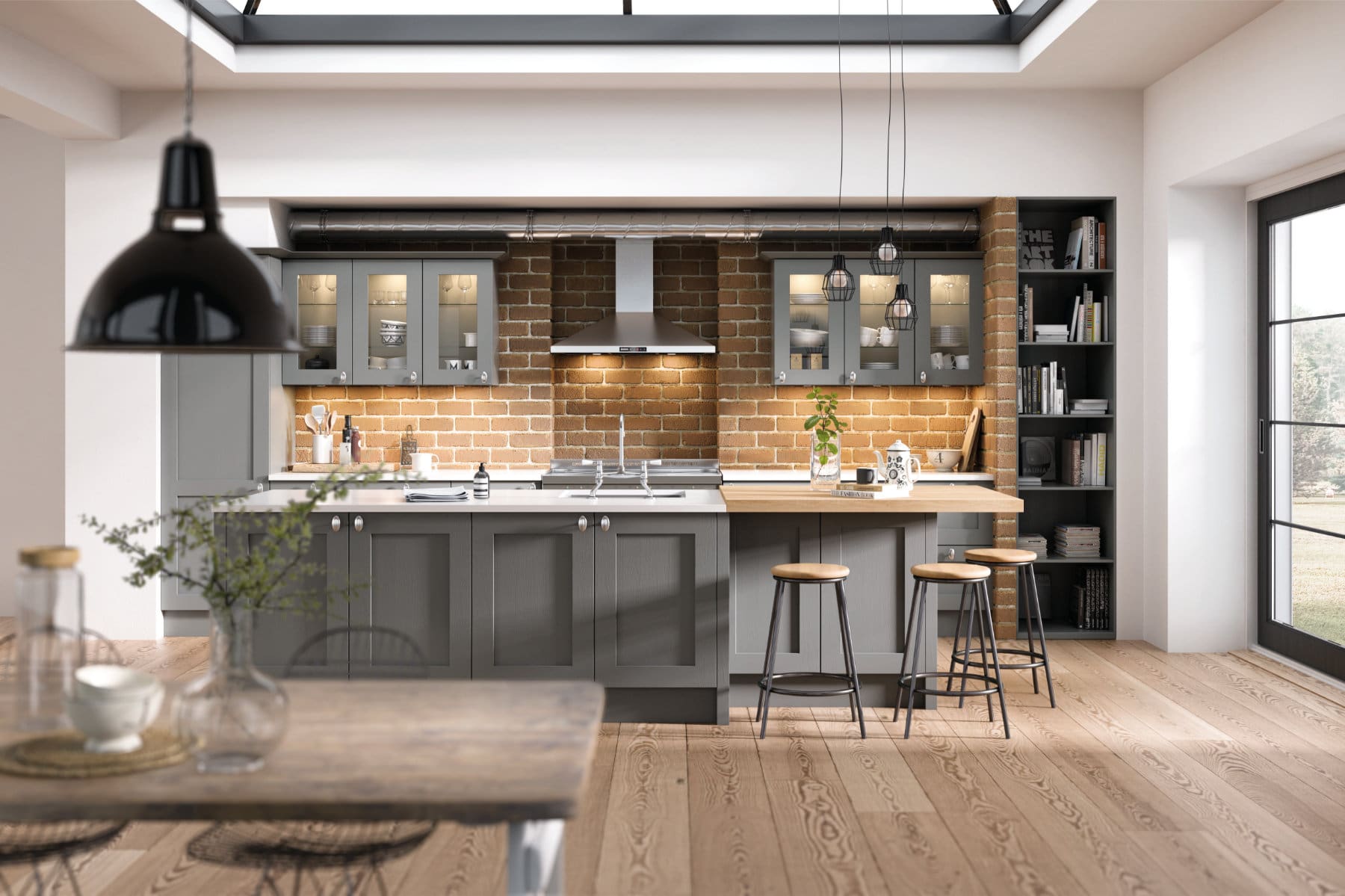
Real-Life Examples of Mixed-Style Kitchens
To further illustrate the concept of combining different kitchen styles, let’s look at a few real-life examples:
Modern-Rustic Kitchen
A modern-rustic kitchen might feature sleek, white cabinets paired with a reclaimed wood island. The splashback could be a simple, white subway tile, while the worktops are made of polished concrete. Industrial-style light fixtures and stainless steel appliances complete the look, creating a space that feels both contemporary and cosy.

Traditional-Scandinavian Kitchen
In a traditional-Scandinavian kitchen, you might find classic, white shaker cabinets combined with light wood worktops and open shelving. The colour palette might be predominantly white and light grey, with pops of colour from accessories like a patterned rug or colourful dishware. Simple, yet elegant, light fixtures and minimalistic decor would enhance the airy and inviting atmosphere.

Industrial-Farmhouse Kitchen
An industrial-farmhouse kitchen could feature exposed brick walls, a large farmhouse sink, and a mix of metal and wood finishes. The cabinets might be a combination of distressed wood and sleek, black metal, while the worktops could be butcher block or concrete. Vintage-inspired light fixtures and open shelving would add to the eclectic charm of this style blend.

Practical Design Considerations
When combining different kitchen styles, it’s important to consider practicality and functionality. Here are a few practical tips:
- Kitchen Storage Solutions
Ensure that your mixed-style kitchen has adequate storage. Incorporate a mix of open shelving and closed cabinets to balance aesthetics and functionality. Use stylish storage containers and organisers to keep your kitchen tidy and visually appealing.
- Workflow and Layout
Consider the workflow and layout of your kitchen. Ensure that the design supports efficient movement between key areas, such as the sink, oven, and refrigerator. An ergonomic layout enhances the functionality of your kitchen while accommodating different styles. - Budget and Materials
Be mindful of your project budget when selecting materials and fixtures and remember that combining different kitchen styles doesn’t mean you have to splurge on every element. Prioritise high-impact areas, such as worktops and cabinetry, and look for cost-effective alternatives for other elements.
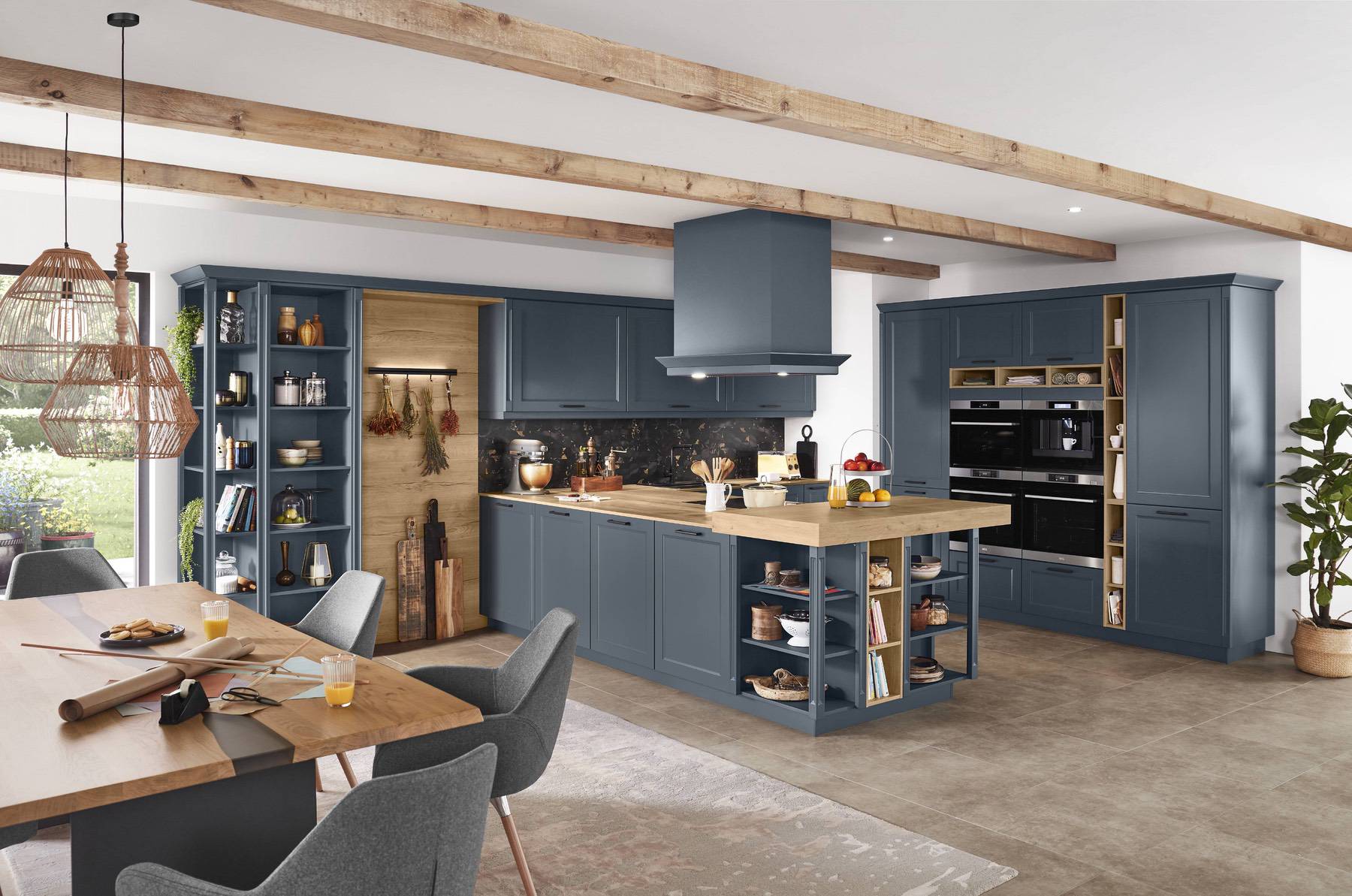
Ready to Start Mixing and Matching?
Combining different kitchen styles is an art that requires careful planning, creativity, and a keen eye for detail. By understanding the basics of various styles, defining your vision, and following practical tips, you can create a stunning, cohesive kitchen that reflects your unique taste and personality. Remember, balance is key, and personal touches can make all the difference. Embrace the challenge and enjoy the process of designing a kitchen that truly feels like home.
For further help in mixing and matching different styles to create your dream kitchen, contact your local Kitchen Specialist today.

